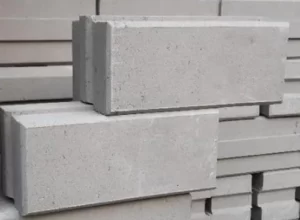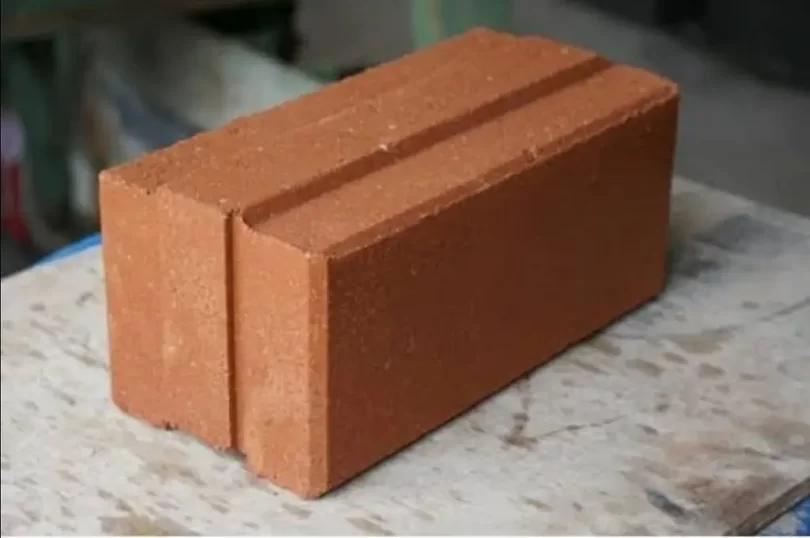Interlock Bricks Manufacturing Process and ingredients can be different according to the type of interlock bricks you’re manufacturing.
Unlike regular bricks, interlocking-bricks are not baked to make them. They are mainly created by mechanically mixing and compressing.
There are three types of Interlock Bricks and they are:- Mud, Cement/Concrete, and Fly Ash.
Strong, high-quality bricks can be carefully made by choosing the right raw ingredients/materials including clay, lime, gypsum, cement etc.
Interlocking bricks production can be manual and semi-automated, which has enhanced the overall quality of the finished goods.
Increased manufacturing capacity has also been obtained by using semi-automatic hydraulic equipment’s.
By switching out the moulds on a single machine, several Interlock brick sizes can be manufactured.
To get the necessary qualities, newly created bricks must always be carefully stacked and cured.
Interlock Bricks with good strength are produced with the help of proper block spacing, regular water curing, and prompt covering of stacks.
In addition, the production of Interlock bricks using machine-based hydraulic compression processes provides high quality then regular bricks and uses less energy than producing an equivalent volume of burnt clay bricks.
Dolfix Mud Interlock Bricks Manufacturing process
The Dolfix Mud Interlock bricks are among the most cutting-edge building materials available today. Since they are thermally radiating, the room is kept cold.
This bricks are durable and can support a great deal of weight. As a result, they can be used to construct multi-story buildings (No limitation on floors with pilers or frames) or load-bearing structures (Max G+2).
Mud is a traditional building material that is available everywhere in the world. It is crucial to choose the right clay and create the right mix in order to improve brick quality.
Dolfix interlock bricks manufacturing team finds and use the best quality laterite mud for their Interlock bricks production.

Interlock Bricks Manufacturing process
Mixing Process
Large vertical silos are typically used to store Portland cement in order to keep it dry.
The process of production begins with the necessary amount of raw materials i.e. laterite soil/mud, gravel, and cement, being transferred into a weigh batcher machine.
A conveyor belt is used to carry literate clay soil, gravel, water and cement into the mixture machine.
The mixture is mixed using a stationary mixer for many minutes.
A pan mixer and a planetary mixer are the two types of mixers which are commonly used.
Production Process
When the mixing is finished, it is poured into an inclined conveyor and transported to the mud interlock bricks production machine.
Once it has been transported, the mixing cycle starts over.
The mud interlock bricks manufacturing machine will pour the mud into the mould and compress it to make the interlock bricks.
Curing and Drying Process
Interlock bricks are transported in pallets and put on a curing rack by an automatic stacker. Each rack can accommodate hundreds of Interlock bricks.
The curing process will happen for 7 days after that the bricks are left in the sunlight to naturally dry.
Manufacturing process of Cement/Concrete interlock bricks
Crusher dust, regular Portland cement, aggregate, and water are mixed and compressed to create cement/concrete interlocking bricks.

Cement Interlock Bricks
Mixing Process
Large vertical silos are typically used to store Portland cement in order to keep it dry.
The process of production begins with the necessary amount of raw materials i.e. m-sand, metal, and cement, being transferred into a weigh batcher machine.
A conveyor belt is used to carry literate m-sand, matel, water and cement into the mixture machine.
The mixture is mixed using a stationary mixer for many minutes.
A pan mixer and a planetary mixer are the two types of mixers which are commonly used.
Production Process
When the mixing is finished, it is concrete mixture is poured into an inclined conveyor and transported to the concrete interlock bricks production machine.
Once it has been transported, the concrete mixing cycle starts over.
The concrete interlock bricks manufacturing machine will pour the concrete mixture into the mould and compress it to make the concrete interlock bricks.
Curing and Drying Process
Interlock bricks are transported in pallets and put on a curing rack by an automatic stacker. Each rack can accommodate hundreds of Interlock bricks.
The curing process will happen for 7 days after that the bricks are left in the sunlight to naturally dry.
Manufacturing process of Fly Ash interlock bricks
The primary energy source in thermal power plants is coal, and the ash that results from burning it is collected as fly ash in an electrostatic precipitator.
Fly ash essentially contains trace amounts of harmful compounds, which will have a bad effect on the environment, plant life, human health, and even the area where fly ash will be dumped.
Industrial waste includes fly ash. This waste’s disposal results in threats to human health and the environment.
It is important to put these wastes to good use: hence efforts are being made to turn them into different building bricks.

Fly Ash Interlock Bricks
Mixing Process
Fly ash and m-sand were combined in a dry state.
The dry mixture was supplemented with the necessary amounts of gypsum and lime.
In order to obtain a consistent mixture of fly ash, m-sand, and stabilizer, both of these steps were completed in a mechanical mixer for five minutes.
Fly ash, m-sand, and stabilizer were mixed uniformly and applied as a thin coating.
To ensure that moisture is distributed evenly in the mixture, the needed amount of water was manually sprinkled and stirred.
Production Process
The raw mixture was weighed and then poured into the production machine mould in a known quantity.
Demonstrate that the filled mould is ready for compaction. After the lid is shut, the compaction is carried out by the movement of a piston attached to the toggle lever.
The brick is ejected out and secured in a stack for curing after the compaction stroke by opening the lid.
Curing and Drying Process
The fly ash interlock brick stack was covered with a wet gunny cloth, and water is sprinkled three to four times daily to keep the stack evenly moist.
The bricks were given a 28-day curing period, allowed to dry outdoors for four weeks, and then put to use for testing.




